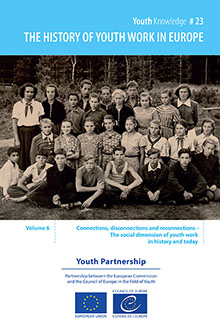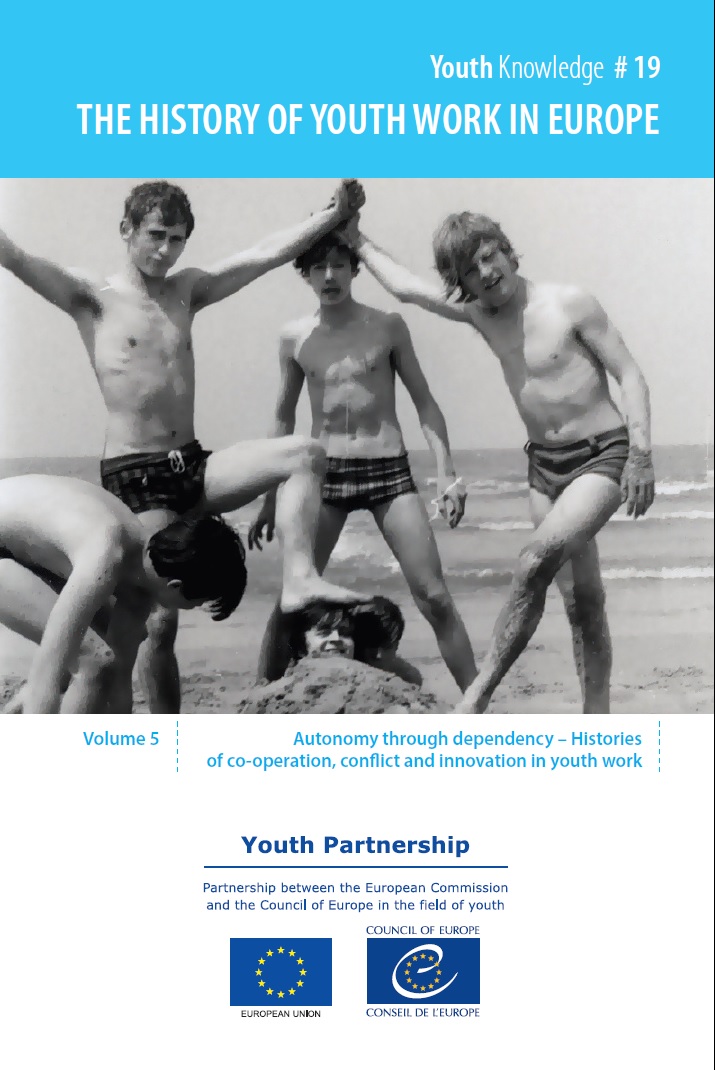The history of youth work volume 6

Howard Williamson, Tanya Basarab and Filip Coussée (eds.)
Council of Europe, 2018. 978-92-871-8513-6
This sixth publication in the History of Youth Work in Europe project based on the workshop held in Malta – Connections, Disconnections and Reconnections: The Social Dimension of Youth Work, in History and Today – looks at the relationship between youth work and social work and the role youth work can play in the social inclusion of young people.
Contributors have reflected on concepts, tools and support measures for more vulnerable and often socially excluded young people and have sought to promote a common understanding of youth work as a social practice.
The workshop that led to this book sought to understand where youth work has positioned itself from its origins, through its development, to its contemporary identity. Is youth work as much a social practice as a non-formal educational one? Where does the balance between these two dimensions lie? What are the mutually enriching dimensions of these two fields in terms of their impact on young people’s lives?
While most agree that youth work needs to be further defined as a practice or profession in itself and that the process of shaping its identity continues in different ways in different countries, it is clear that when it comes to a cross-sectoral perspective and youth work’s interaction with social work,
the picture becomes significantly more complex, arguably much richer and certainly more dynamic than might have hitherto been foreseen.
Download The History of youth work in Europe - Volume 6 >>

Lasse Siurala, Filip Coussée, Leena Suurpaa and Howard Williamson (eds.)
Council of Europe, 2016. 978-92-871-8161-9
The “History of youth work in Europe” series aims to achieve better understanding of current challenges in youth work and youth policy. Volume 5 addresses questions like: How have government policies and administrative practices during the past decades affected youth work? What kind of strategies has youth work developed to react to them and to create a positive space for work with young people? Can educational approaches of youth work, like social pedagogy, help mediate between young people in their ever-changing lives and society? Co-operation between youth policy, youth research and youth work has been called “the Magic Triangle” – but is the magic still there?
This publication discusses these and other topics from a variety of perspectives. The authors come not only from Europe, but also from the USA, Australia and South Africa, providing a refreshing comparative reflection on youth work issues and opportunities, which is revealed to be global in nature. They also have diverse and varied backgrounds in youth research, youth work, youth policy making and youth worker training. This comparative historical perspective puts some of the pieces of the “youth work puzzle” together, while many are left unconnected. It also becomes apparent that there is an element on randomness in the historical development of youth work. Many structures, policies, approaches and methods are not “historically necessary”. Rather, many things could have come out differently. This volume on the history of youth work provides many readings: it provides a rich collection of national youth histories to complement and build upon the four earlier volumes, and histories and analyses of youth work for readers to compare with their own experience, sharpen their critical view and inspire their thinking.
